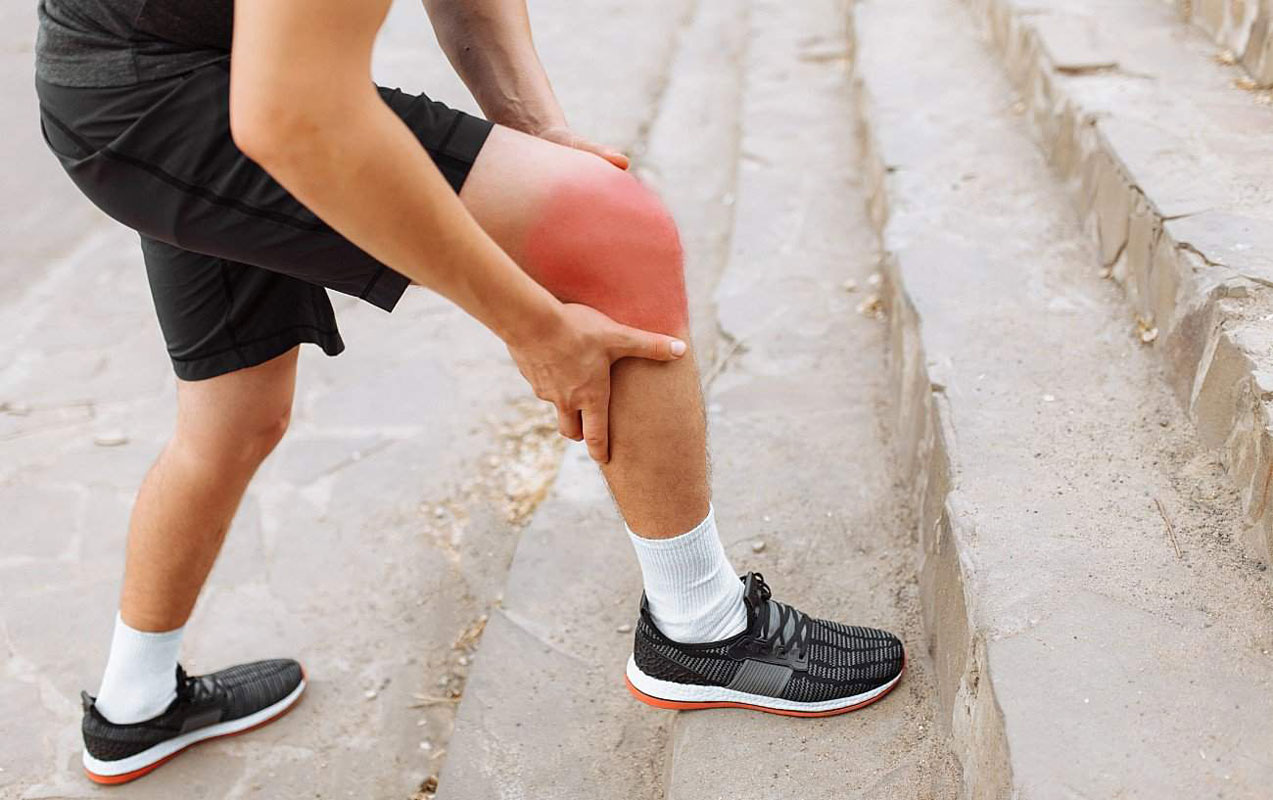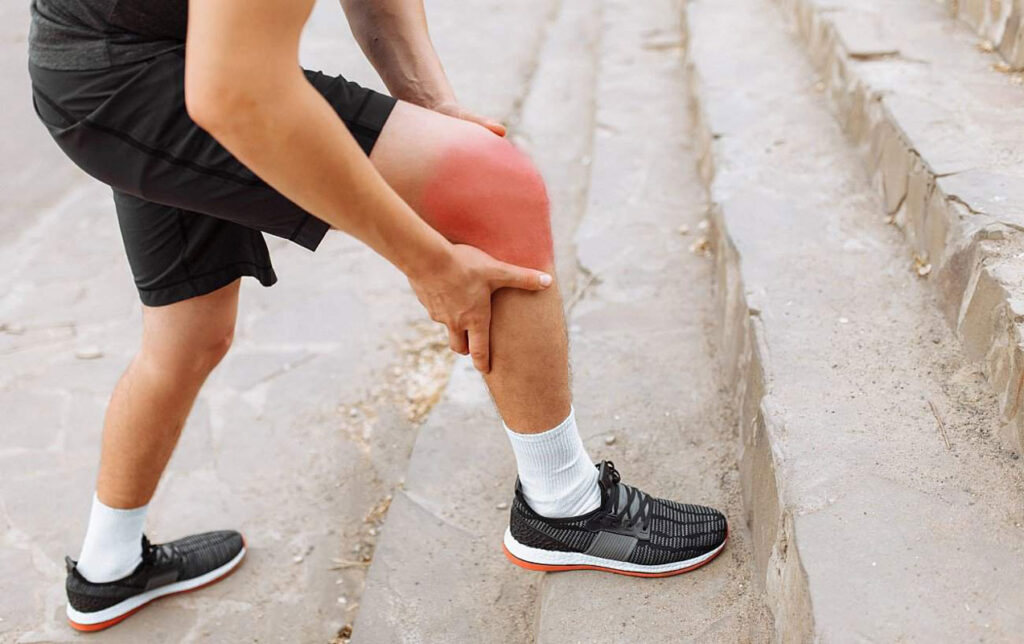As a desert makes warriors and temples make worshippers, our knees make us athletes. Strong knees give us the confidence to advance like warriors and the humility to bend like worshippers. Many joggers are anxious to return to their active routine after being confined indoors by the pandemic. Will we be able to run like we used to? Will our legs wobble? Yes, you will be able to run like you used to. No, your legs won’t wobble. Don’t let the wobble in the mind stop your start.

Take tips, take heart
So, assemble your walking kit, start with slow and easy walk. As you gather momentum, if the urge to run rises, run! Then, walk again. This is a great re-introduction. You’ll be surprised how effortlessly you slip back into the old rhythm, how familiar it feels. A bit of caution: Since it’s your first day, take just one round. Stop when you’re on top. Your muscles retain memories of old movements, that’s why it feels so familiar, so easy, but do not strain them. Give them a week to condition themselves.
Choose a knee-friendly surface — mud or grass, not concrete. You may not be able to avoid hip and side aches all together yet. Start doing crunches and planks to strengthen your core muscles, half squats for glutes, and floor rolls from left to right as well as leg raises to strengthen the back and knees. As key muscles get toned and conditioned, the aches will disappear. As you walk or run or rove, keep your shoulders squared. Thise posture helps avoiding aches.
Watch your food intake and lose weight if you’ve put on kilos. Obesity imposes a lot of pressure on the knees and heart. Avoid breakfast before your run so that the body burns fat instead of the breakfast. And if you do need to eat, have carbs — porridge or poha — as the body burns them easily. Have protein — yoghurt, egg or few nuts — after your run. Sip water before, during and after your run as well as through the day. Heat waves and rising temperatures make hydrating even more vital.
You were 38 when you stopped running and are now 40; not to worry. Age is no hindrance if the attitude is not. As Heather Jones said, ‘Good things come to those who believe, better things come to those who are patient and the best things come to those who don’t give up.’
The arthritic knee
Take my friend Deeds; she has always loved jogging on the beach, and did that till two years ago, when she was diagnosed with arthritis. When your knees hurt, even a free spirit has to curb its zeal. While she continued to dream about running, she replaced the beach with a stationary bike and a swimming pool, but a little too late. In severe pain, has been advised knee replacement. Her question is: Will I be able to jog on the beach again after this surgery?
Most people with knee replacement can resume many normal activities after about three months. Artificial knees are designed to mimic natural knees. So, they do need to be exercised to function properly. But the exercises have to be done under the watchful guidance of the doctor and physical therapist. The idea is to strengthen the muscles around the knees and maintain a bearable weight. Most medical experts recommend exercising 20–30 minutes two to three times a day. Do standing knee bends: Stand erect with crutches or walker: 1. Lift thigh and bend knee to the extent you can. Hold 5–10 seconds. 2. Straighten knee and lower leg, touch down floor with heel first. 3. Repeat as many times as advised.
Walk 30 minutes two to three times a day. It builds strength in the knees and burns calories. Swimming and stationary armchair cycling are fine too. A rough and ready timetable for recovery is: 3 months for the pain to subside. The doctor may suggest anti-inflammatory drugs like ibuprofen, or NSAID creams. It takes a year for the swelling in the joints to disappear, and two years to heal completely.
It’s good to know these things as it helps to be prepared and plan your life over the next two years. There are a few things not to be done: Avoid: twisting and abrupt movements, jumping, high-impact exercises, putting on weight and fatty foods.
To ease the nagging pain, with the heel of your hand, press down on the muscle near the pain and hold it for several seconds. Then release. Do it several times. The pain will decrease or go away. This kind of self-help also dissipates helplessness.
A tip for those with joint issues but don’t need surgery. Sometimes, when there’s a flare-up, it is difficult to distinguish whether it’s your joints or muscles. It is important to know that flare-ups can occur in high humid conditions as during monsoons, extreme cold, and when temperatures fluctuate wildly — hot one day, cold the next. It can make the joints and muscles stiff and painful. The key difference is this: Muscle pains can flare-up anywhere in the body, arthritis flares up only in joints.
Muscle pain and stiffness can be drunk away. Water is the muscle’s best friend. Arthritis normally makes itself felt as joint stiffness in the morning and changes to a dull, continuous ache as the day progresses. Additionally, there is a gritty feeling when the joint is moved and the area is painfully tender when touched.
Three practices bring relief to arthritic joints; fat-free food (no oil, ghee, butter. Steam, grill, broil, boil, bake or air-fry). Apply NSAID cream on the joint. A good night’s sleep always… always… always helps and even hastens the healing process. Exercise to improve function is a must. Please don’t miss a single day. Mobility in joints is crucial as it helps secrete the synovial fluid — a natural joint lubricant in the body.
Develop equanimity
The best way to live with arthritis is to take the lament out of living. Emotional disturbances can trigger joint pains not only in the knees or knuckles but in the lower back as well. So be less emotional. Develop even-mindedness. Keep stress at arm’s length. Meditate daily, keep the mind so busy, so fulfilled that nothing upsets it. Teach it new tricks. Don’t let it idle, fret and fume, dredge out negative memories.
Get into creative pursuits. Write poetry, prose, a diary. Be a doodle duck. Sing. Explore your creativity, listen to inspiring talks. Creative pursuits are not just a way to pass your time today but an investment for tomorrow as well.
Get a children’s colouring book and don’t stay within the lines, make a mess; get science kits and mess around with them. Make your world a playground, a laboratory, a studio… go back to being a child. As you get younger, your joints will heal and grow younger too… and will run with you.
The writers are authors of Fitness for Life and Simply Spiritual – You Are Naturally Divine and teachers of the Fitness for Life programme.






